-
Origins of the Comstock: The Hale and Norcross
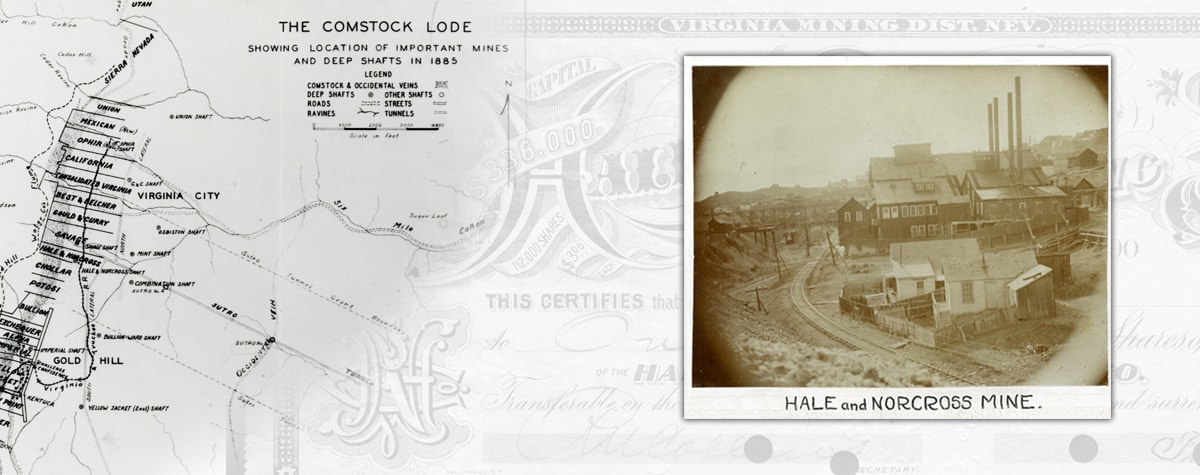
The Hale and Norcross was one of the first mines developed after the discovery of the Comstock Lode and one of the mining district’s best producers. The Bonanza Group wrested control of the mine away from the Bank Crowd, leading to a shift in power in Virginia City.
Read more about Origins of the Comstock: The Hale and Norcross
Left Image: The Hale & Norcross Mine shown on a map of locations of important mines and deep shafts, 1885; courtesy Special Collections Department, University of Nevada, Reno Libraries [1]. Right Image: The Hale & Norcross mine in Virginia City; courtesy Special Collections Department, University of Nevada, Reno Libraries [2].
-
False Hopes at the Four Aces

Following the discovery of rich mines in Tonopah and Goldfield, prospectors renewed efforts to discover gold and silver ore in Nevada. Many believed that Bullfrog was the next big strike, but shareholders invested in a dream that never met expectations.
-
Nevada Revolves Around Tonopah & Wingfield
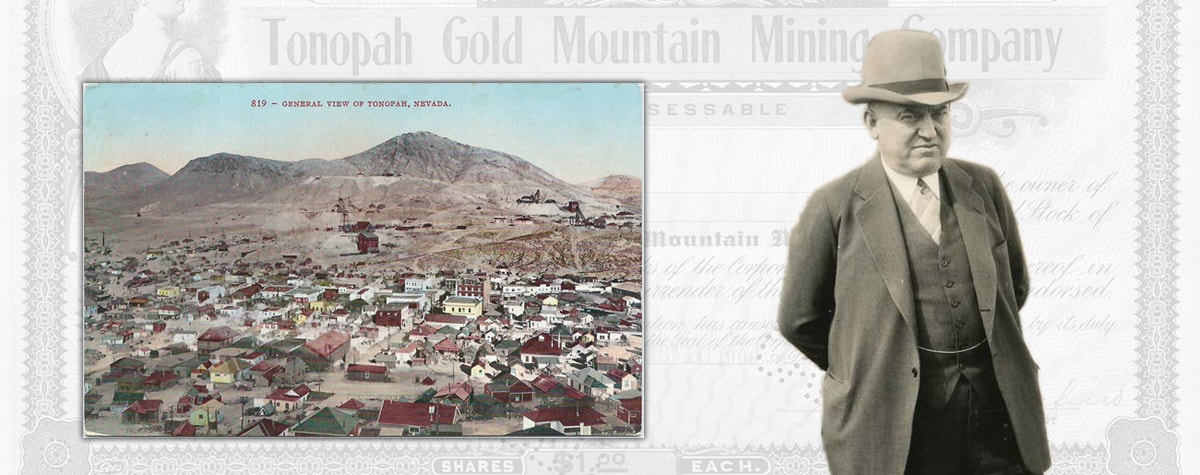
The mines of Virginia City had fallen silent by the early 1900s, but the discovery of silver in Tonopah and Goldfield reinvigorated Nevada’s economy. The region rapidly became the center of political and financial power in Nevada with George Wingfield at the helm.
-
Tragedy Strikes at the Yellow Jacket Mine
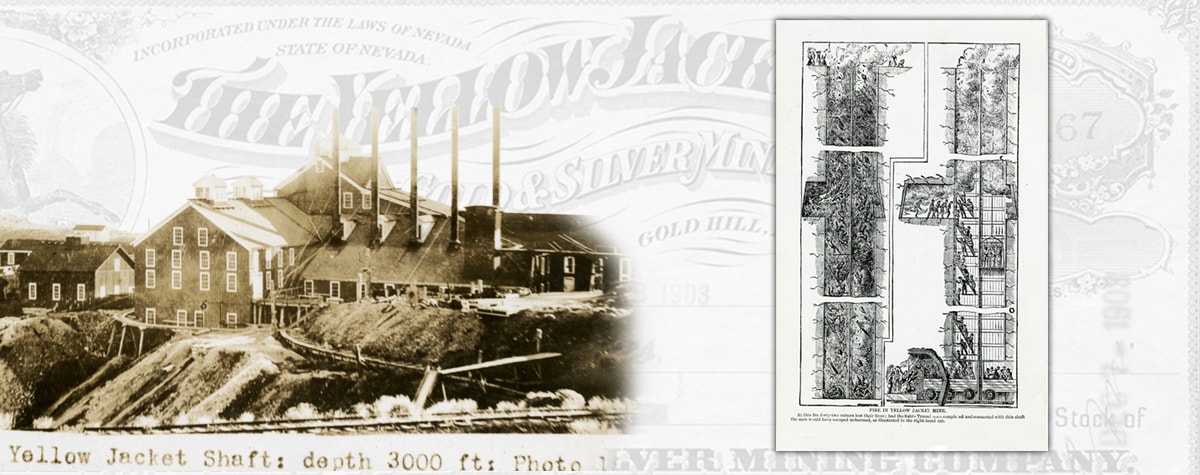
The state of Nevada was built on the fortunes of its mining industry, but mining was a hazardous undertaking. The Comstock’s Yellow Jacket Mine was the site of one of the worst disasters in Nevada’s mining history when a fire broke out in the mine on April 7, 1869.
Left Image: The Yellow Jacket Mine, the Comstock Lode; courtesy Special Collections Department, University of Nevada, Reno Libraries [7]. Right Image: “Fire in Yellow Jacket Mine,” 1869 illustration showing how the loss of life that occurred in the Yellow Jacket disaster might have been prevented if the Sutro Tunnel had existed; courtesy of the Special Collections Department, University of Nevada, Reno Libraries [8].
-
Rawhide and the Era of Boosterism
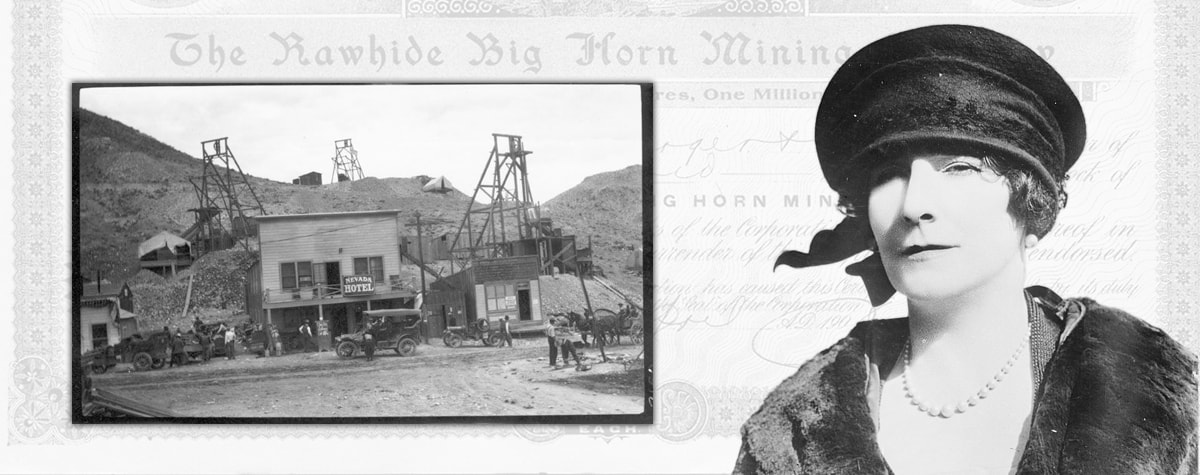
Prospectors were exploring the west in search of the next big mining strike, while investors scrambled to buy into mining stocks on the ground floor. Scam artists took advantage of this climate by selling stocks in mines that were often mediocre at best, while touting their untold riches.
-
Queen of the Short Lines: The Virginia & Truckee Railroad
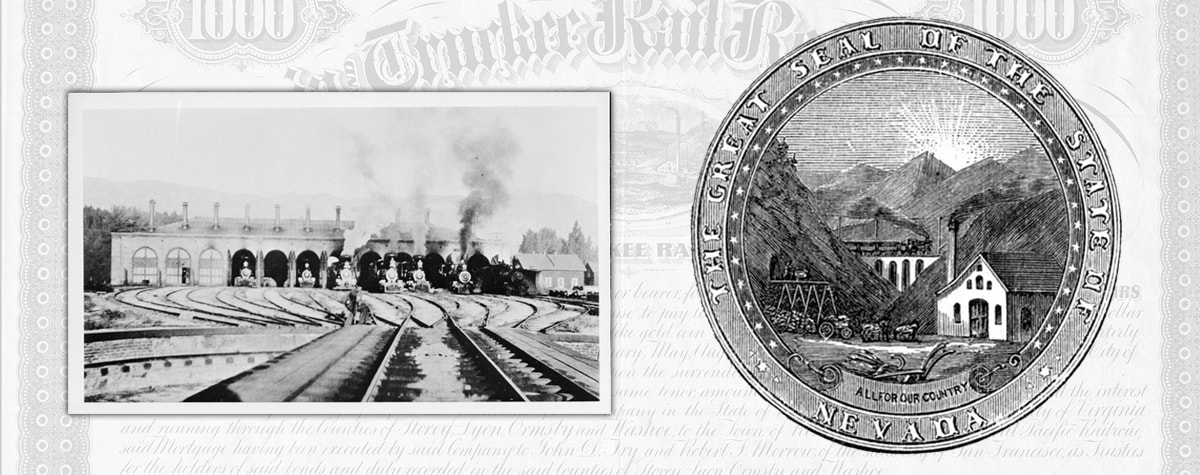
The mines of Virginia City’s Comstock Lode were isolated in the mountains of Nevada. The completion of the Virginia & Truckee Railroad brought less expensive supplies to the Comstock while boosting mine profits by transporting ore more efficiently.
Read more about Queen of the Short Lines: The Virginia & Truckee Railroad
-
The Sutro Tunnel: Capitalism at Its Finest

The Sutro Tunnel was a feat of engineering, stretching nearly four miles through the mountains to reach the mines of the Comstock Lode. It was designed to more efficiently move ore out of the mines, while also providing drainage and ventilation. However, the Sutro Tunnel project was contentious and ran into resistance from the William Sharon and the Bank Crowd.
 University of Nevada, Reno
University of Nevada, Reno